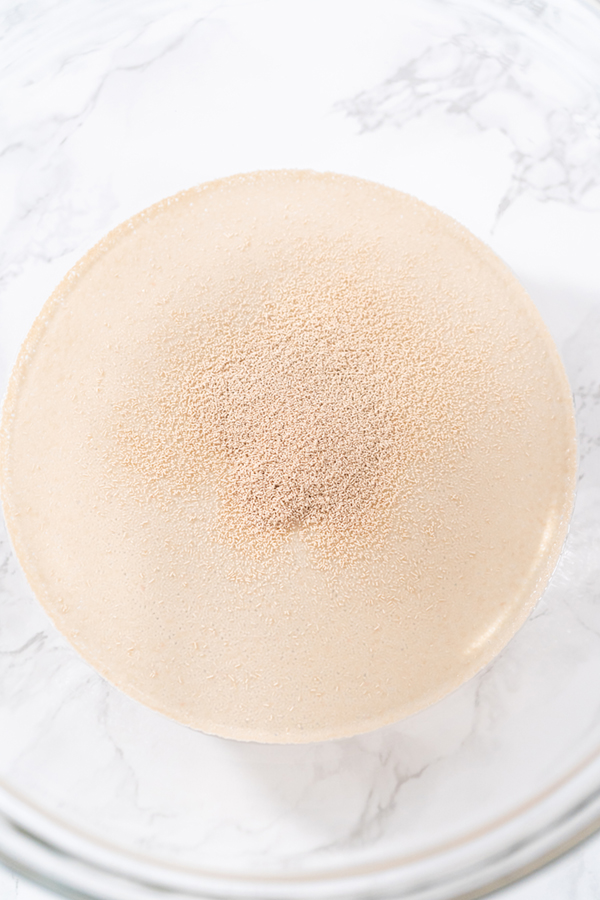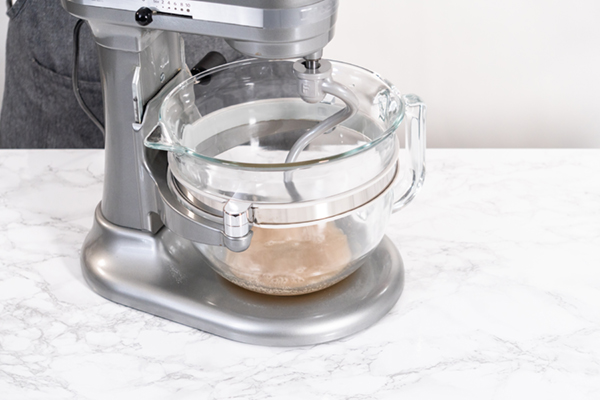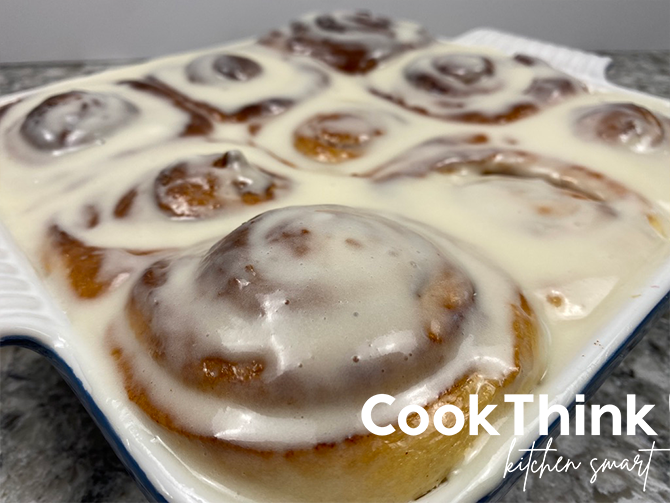Using yeast can be vital in making homemade breads and rolls. It’s the ingredient that causes it all to rise and in turn creates air holes which make the bread light and fluffy. Knowing how much yeast is in a packet comes in handy as recipes can call for yeast based on varying measurements.

What is Yeast?
Yeast is an essential ingredient used in baking items such as breads, rolls, and pizza crust. It is an agent used to cause breads to rise. Scientifically, yeast is a single celled microorganism that grows through a process called budding.
How Does Yeast Work?
When purchased in the store, yeast is typically in a dried state, and the moisture has been removed from it. But activate the yeast by putting some moisture back into it, as well as some warmth and you’ll have yeast that thrives. Yeast feeds on the sugars and flour and releases carbon dioxide that makes bread rise.
How Much Yeast is in a Packet?
Yeast comes in various kinds as well as various packaging sizes. Yeast can be purchased in cakes, in 1 pound vacuum sealed packages and in little packets. How much yeast is in a packet?
There are approximately 2 ¼ teaspoons of yeast in a packet. This is equivalent to ¾ tablespoons as well as 7 grams.
How to Store Yeast
The proper storage for yeast will help to maximize its shelf life as much as possible. Unopened packets of yeast should be stored in a cool and dry place, away from sunlight and temperature fluctuations.
Once you open the packet of yeast, store it in an airtight container or zipped bag in either in the fridge or in the freezer.

How To Check If Yeast Is Still Good
You’ll only want to use yeast that is still active. Otherwise, your dough won’t rise. First check the expiration date on your yeast packaging to confirm that it hasn’t expired.
Then, mix a few tablespoons of warm water with your yeast, along with a pinch of sugar. This will activate the yeast if the yeast is still good. Wait 5 minutes and if the mixture begins to get bubbly, then the yeast is still good. If nothing happens and no foam appears, the yeast should be thrown away because it won’t make your dough rise.
What Are the Different Types of Baking Yeast?
There are four main types of baking yeast as follows. Each of these kinds of yeast can be used interchangeably. The type doesn’t matter based on what kind of bread you’re making. Each is a matter of personal preference and convenience.
Active Dry Yeast. Active dry yeast is yeast that has been processed and has had the water from it removed. It needs to be dissolved in whatever warm liquid is in your recipe first, before adding it to the mixture.
Instant Yeast. Instant yeast works a little faster than active dry yeast, and doesn’t need to be dissolved in water first.
Quick-Rise Yeast. When using quick-rise yeast, your bread dough only has to rise once rather than twice like some recipes might instruct. It does not have to be dissolved first before being added to the mixture.
Cake Yeast. Cake yeast is a form of fresh yeast that needs to be refrigerated at all times and needs to be dissolved in warm liquid first.

Are There Any Alternatives for Yeast?
If you’re in a pinch and you don’t have yeast, here are a few alternatives that can do the job of making your bread dough rise.
Baking soda mixed with an acid, such as lemon juice will create the proper reaction that will make your dough rise.
Double-Acting Baking Powder is baking powder and cream of tartar, just moisten it by adding it to your mixture to activate it.
How Much Yeast is in a Packet?
A packet is a smaller type of packaging, generally intended for a single use. Here is a quantity of yeast in a packet.
In Grams
There are 7 grams of yeast in a packet.
In Teaspoons
There are 2 ¼ teaspoons of yeast in a packet.
In Tablespoons
There are ¾ tablespoons of yeast in a packet.
How many packets of yeast do I need to make bread?
The number of packets of yeast needed to make bread will depends on your recipe. There is typically a ratio of flour to yeast that’s used so adequately allow the bread to rise.
For example, 4 cups of flour generally uses about 2 teaspoons of yeast. Be sure to follow your recipe for accurate success.
Frequently Asked Questions
Following are frequently asked questions that relate to how much yeast is in a packet. If you have a question that’s not asked here, please feel free to drop it in the comments box below and we’ll be happy to respond.
How many teaspoons are in a packet of yeast?
There are approximately 2 ¼ teaspoons in a packet of yeast.
What is 1 gram of yeast in teaspoons?
One gram of yeast is approximately 0.35 teaspoons.
How many yeast cells are in a packet?
There are approximately 69 billion yeast cells inside a packet of yeast. That’s a lot of little cells.
How many mL is a packet of yeast?
A packet of yeast is approximately 11 mL.
Are All Packets of Yeast Created Equal?
All packets of yeast, whether instant yeast or active dry yeast have approximately 2 ¼ teaspoons or 7 grams of yeast.
How Many Teaspoons Are in A Packet of Yeast?
There are 2 ¼ teaspoons of yeast in a packet of yeast.
How Many Tablespoons Are in A Packet of Yeast?
There are approximately ¾ tablespoons in a packet of yeast.

How Many Packets of Yeast Do You Need for Baking?
The number of packets of yeast needed for baking will depend on the recipe as well as how much flour is used in the recipe. Typically, the more flour that’s used, the more yeast will be used.
How much yeast is in a “package”?
A package is different than a packet. A package of yeast can contain a pound or more, depending on its package size. It’s generally intended for more than one use for general household baking and should be stored appropriately after it’s opened.
A packet of yeast contains 2 ¼ teaspoons of yeast. It is packaged much smaller and is intended for 1-2 single uses, depending on your recipe.
How much instant yeast is in a packet?
Instant yeast contains 2 ¼ teaspoons of yeast or 7 grams, which is the same as a packet of active yeast contains.
1 envelope (or packet) of active dry yeast, instant yeast, rapid rise yeast, fast rising yeast or bread machine yeast weighs 7 grams, or 1/4 ounce and equals 2 1/4 teaspoons, or 11 mL.
Packets are usually sold in a strip and each strip contains three packets; each packet in the strip is considered one packet. Each packet contains 1/4 oz. or 2 1/4 teaspoons of yeast.
Which type of yeast should you use?
The kind of yeast used doesn’t matter and is a matter of personal preference and storage opportunity. Kinds of yeast are interchangeable.

Can you use expired yeast?
We don’t recommend using expired yeast as it might not rise. If your yeast is unopened and the expiration date isn’t too far past, test the yeast first by mixing it with a few tablespoons of warm water and a pinch of sugar.
Wait 5 minutes to see if the yeast activates and begins creating a foam.
If it does, the yeast should be fine to use. If it doesn’t begin to bubble then the yeast is probably dead and should be thrown away. It will not make your bread rise.
How long does a yeast packet last?
If the yeast packet has been opened, it can last for up to 3 months when stored in a zipped bag in the refrigerator or freezer. If unopened and stored in a cool, dry location it can last for up to 12 months.
Can I substitute one kind of yeast for another?
Yes, substituting one kind of yeast for another works fine. They are interchangeable and the kind of yeast used typically doesn’t matter.
How much yeast is in a 1/4 ounce packet?
There are 2 1/4 teaspoons of yeast in a ¼ ounce packet.
How much yeast is in a one-ounce packet?
There are approximately 9 teaspoons of yeast in a one-ounce package, or the equivalent of 3 tablespoons.
Can I use the same measurement for all types of yeast?
Yes, you can use the same measurement for all types of yeast. Active dry yeast will use the same quantity as instant yeast, which can be the same as cake of yeast and so forth.
Do yeast measurements have to be exact?
When using yeast, the measurement doesn’t have to be exact. However, the amount of yeast that’s used directly relates to the length of time it will take the dough to rise. Therefore, if less yeast is used than the recipe calls for it will likely take longer for your dough to rise.
Is a Package of Yeast the Same as a Packet of Yeast?
A package of yeast is typically not the same as a packet of yeast. A packet of yeast refers to the small 2 ¼ teaspoons of yeast the are usually sold in a strip of 3 packets.
And a package of yeast can refer to any other packaging as yeast is sold. It can be a much larger quantity.

How Much Does a Teaspoon of Yeast Weigh?
A teaspoon of yeast weighs 3.15 g or the equivalent of .10 oz.
How Much Is 1 Packet of Dry Yeast In Grams?
One packet of dry yeast weighs 7 grams and is equivalent to 2 ¼ teaspoons.
How Much Yeast Is in a Fleischmann Packet?
A Fleischmann Packet of yeast contains 2 ¼ teaspoons or 7 grams.
How Much is 2 Packets of Yeast in Tablespoons?
Since 1 packet of yeast contains ¾ tablespoons, 2 packets of yeast contains 1 1/2 tablespoons.
How Much is 1 Packet Active Dry Yeast to Instant Yeast
The conversion of 1 packet of active dry yeast to instant yeast is exactly the same, but instant yeast rises faster than active dry yeast.
Can You Use Half a Packet of Yeast?
Yes, you can use half a packet of yeast if your recipe calls for a smaller amount than is needed in a full packet. You’ll want to follow the recommended guidelines for storage as mentioned above for any leftover yeast.
How Long Do Yeast Packets Last?
Yeast packets can last for up to 12 months for a packet that’s unopened, and up to 3-4 months when opened, if stored properly.
What Happens If You Use Expired Yeast?
If you use expired yeast, there’s a possibility that your bread will fail because the yeast won’t make your dough rise. Expired yeast might be dead or non-active.
How much is in a Fleischmann yeast packet?
There are just over 2 teaspoons of yeast in a Fleischmann yeast packet. If your recipe calls for 2 teaspoons, you’ll have approximately ¼ teaspoon left over.
How many teaspoons of yeast are in 2 packets?
Since there are 2 ¼ teaspoons of yeast in 1 packet, there are 4 ½ teaspoons of yeast in 2 packets.
How Much Yeast is in a Packet UK?
A packet of yeast in the UK contains 2 ¼ teaspoons of yeast, or 7 grams.
How Many Packets are 2 Teaspoons of Yeast?
If your recipe calls for 2 teaspoons of yeast, you’ll need 1 packet. You’ll have ¼ teaspoon leftover.
How many packets of yeast do you need for baking?
The number of packets of yeast you’ll need for baking will be determined by your recipe and the yeast to flour ratio.
What is the difference between active dry yeast and instant yeast?
The difference between active dry yeast and instant yeast is that if you’re using active dry yeast, you’ll want to dissolve it in water first. For instant yeast, it can simply be added to the recipe and doesn’t need to be dissolved first.
How Are Fresh Yeast, Active Dry Yeast, and Instant Yeast Different?
Fresh yeast is yeast that’s active. It should be stored in the refrigerator at all times whether it’s opened or unopened. Active dry yeast and instant yeast are similar in that they are in their dehydrated form.
The difference between the two is that active yeast needs to be dissolved before it’s added to the ingredient mixture and instant yeast can be added straight in without being dissolved first.

Why The Yeast-To-Flour Ratio Is Important
The yeast to flour ratio is important because the amount of yeast used determines how well and quickly your bread will rise. By reducing the yeast, the bread will take longer to rise, if it rises at all. And to make more loaves, you can simply double the recipe including the amount of flour and yeast that is called for.
Yeast Conversions: Using Instant Yeast Instead of Active Dry Yeast
Below is a conversion chart of yeast-by-yeast types. You will note that it takes more cake yeast to equal a lesser amount of the other kinds of yeast. This data is a good solid guideline for how much flour for 1 packet of yeast.
Type of Yeast Grams Cups of Flour
Active Dry Yeast 7 4
Instant Yeast 7 4
Cake Yeast 17 4
Rapid Rise Yeast 7 4
How to measure yeast
The best way to measure yeast is by using a teaspoon or a tablespoon depending on the quantity needed. Fill the measuring spoon heaping and then use the back of a knife to level it off. If you need to weigh yeast using ounces or grams, simply use the appropriate scale for weighing.
How to proof or activate dry yeast
The way to activate yeast is by mixing it with a pinch of sugar and a few tablespoons of warm liquid that your recipe calls for, such as milk or water. Wait 5 minutes after mixing these three ingredients and if your yeast begins to foam, it has been activated. If your yeast is not foaming wait a few more minutes, but if it’s still not bubbling, it’s likely that your yeast is no longer good.
Yeast Conversions
Following is a measurement conversion chart showing equivalents that are useful when measuring yeast.
Packets Grams Ounces Teaspoons Tablespoons
1 packet 7 g ¼ oz 2 ¼ tsp ¾ Tbsp
2 packets 14 g ½ oz 4 ½ tsp 1 ½ Tbsp
3 packets 21 g ¾ oz 6 ¾ tsp. 2 ¼ Tbsp

Tips for Using Yeast
Following are our tips for using yeast and important yeast facts for making the best yeast rising breads.
Storage. It matters how your yeast is stored to maximize its shelf life. Unopened yeast should be kept in a cool, dry location. Yeast that’s been opened needs to be stored in the refrigerator in an airtight container or placed in the freezer. The exception to this is fresh cake yeast which should be kept in the refrigerator at all times.
Rising. For the optimum outcome for rising your bread, place it in a warm location that’s approximately 70-80F degrees and is free of drafts.
Water temperature. The water temperature used for making bread and activating your yeast is important. If you think of heating a baby’s bottle, you’ll get the just right temperature. Test a few drops of it on the underside of your wrist. If it feels warm and not too hot, then the water temperature is just right.
Sugar. Along with water, adding sugar is the other two ingredient factor of activating your yeast. Yeast needs sugar to make it most effective.
Certain ingredients slow rising of bread. It’s important to note that there are certain ingredients that can slow the rising of bread. These ingredients include things such as salt, eggs, dairy, and fat.
Using Yeast in Pizza Dough
Using yeast in pizza dough can be a homemade favorite. Homemade pizza crust is some of the best, whether you like it thick or thin. You’ll want to take the time to master using yeast in pizza dough and it will become a family favorite.
Yeast and the Baker’s Percentage Method for Pizza
Some folks create recipes by using the baker’s percentage method. That method usually infers that you should use a certain amount of ingredient such as yeast for the specified amount of flour. Here are some sample percentages that can be used for scaling a pizza dough recipe:
Flour: 100%
Water: 67%
Sugar: 4%
Yeast: 2%
Salt: 2%
Olive oil: 4%
How Much Yeast for Pizza Dough?
The amount of yeast that should be used for pizza dough depends on each recipe. Be sure to locate your recipe first, then you can determine how much yeast you’ll want to buy.
Save to Pinterest

Delicious Yeast Breads:
Follow us on social media:
For more posts like this one, follow us on Pinterest, Facebook, Instagram and YouTube.




